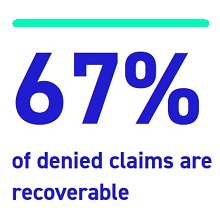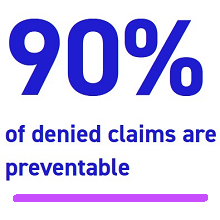Is it a Clinical Validation Denial?Posted on June 17, 2020 It is easy to confuse a clinical validation (CV) denial with a DRG denial. To appeal a CV denial, one must first be sure it is, indeed, a clinical validation denial. DRG Denials: CMS tells us that a DRG validation is the process of reviewing physician documentation, and determining whether the correct codes and sequencing were applied to the billing of the claim. Certified coders shall ensure they are not looking beyond what is documented by the physician and are not making determinations that are not consistent with the guidance in Coding Clinic. Medicare Program Integrity Manual Chapter 6.5.3 -DRG Validation Review (Rev. 608, Issued: 08-14-15, Effective: 01-01-12, Implementation: 09-14-15) Clinical Validation Denials: A CV denial questions the clinical validity of a diagnosis or multiple diagnoses. In its most basic form, the auditor is essentially saying, “Doctor, you misdiagnosed your patient. On a clinical basis, diagnosis X did not exist.” Why is it important to know the difference? DRG denials are coding denials and are generally best appealed using coding guidelines, Coding Clinics, and coding conventions. An appeal using clinical rationale for a coding denial will likely be unsuccessful. CV denials are clinical denials and generally best appealed using clinical criteria from evidence-based medical sources. Coding guidance will likely not be effective in the argument for the clinical validity of a diagnosis. Examples of DRG (coding) denial rationale:
Examples of CV denial rationale:
|




